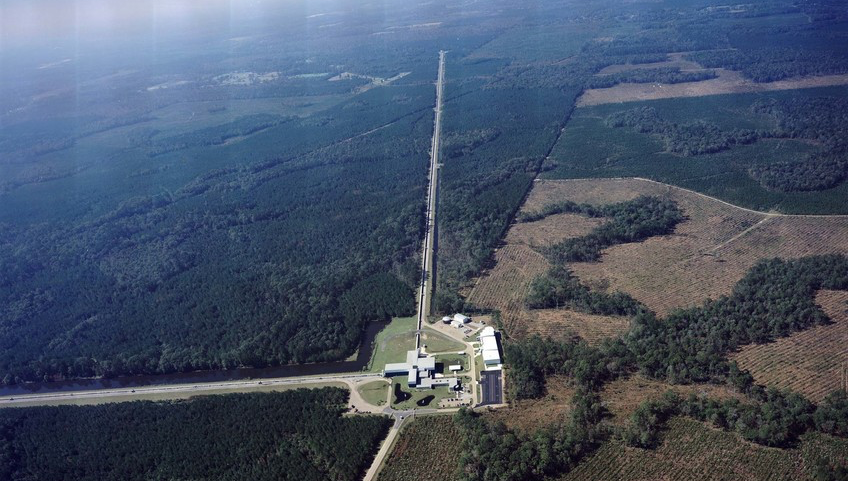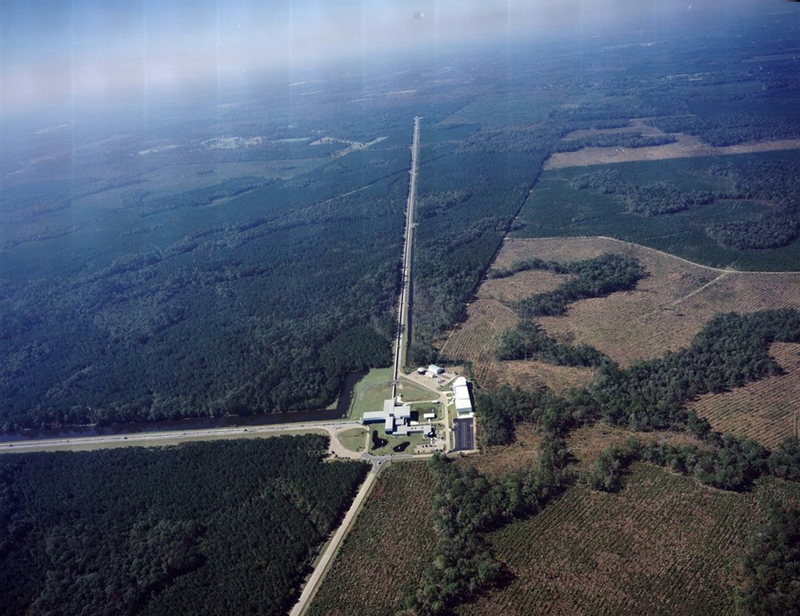Background Noise of Gravitational Waves
The recent detection of gravitational waves emitted from a pair of merging black holes implies the existence of a large population of similar pairs, which should be generating a background of waves too faint to be detected with present technology. Using this information, researchers now estimate that this background could be roughly 10 times stronger than previously expected and might be found by sensitive instruments in only a few years. The background signal could help astrophysicists better understand how black hole binaries form and also pave the way to detecting the waves emitted by the expanding Universe shortly after the big bang.
Gravitational waves were detected for the first time on 14 September 2015 by the Laser Interferometer Gravitational-Wave Observatory (LIGO). By reflecting laser light between mirrors set 4 km apart, the team was able to detect tiny fluctuations in the distance between the mirrors as the waves passed. The waves were triggered by an event, called GW150914, involving the merger of a pair of black holes having masses of about 29 and 36 times that of the Sun.
Researchers expect that similar pairs of black holes, as well as neutron stars, should be merging constantly, creating gravitational waves that should bombard the Earth from all directions and make the equivalent of a faint popping noise in a detector. Previous estimates of the likely strength of this background had to make assumptions about how many pairs there might be and about the distribution of their masses. These estimates remained speculative, as no actual binaries were known.
“What the recent observation has changed,” says Nelson Christensen of Carleton College in Minnesota and the LIGO Scientific Collaboration (LSC), “is that we now know there really is a population of black hole binaries. We have a small bit of information about it.”
The new analysis—carried out by LSC researchers working with the European Virgo collaboration—estimates the energy density in the gravitational wave background in the frequency range below 100 Hz, where the LIGO detector is most sensitive. To make this estimate, they assumed a population of black hole binaries of various sizes, having a range of distances from Earth, and created through a variety of scenarios. They then calculated the amount of gravitational radiation that would result from the merging of these objects.
The team then adjusted this estimate by using details of the GW150914 event—especially the masses of the black holes involved—to make a most likely guess at the actual distribution of black hole binaries. The idea is that the observed merger is most likely representative of the general population, rather than being extremely unusual. If the black hole binary population is represented as a bell curve, or Gaussian, the event should lie within the main bulge, not in the tails. The observed mass of GW150914 suggests that the main population of black hole binaries could be roughly 20 times more massive than expected, which would generate a background roughly 10 times “louder” than previous estimates. However, Christensen emphasizes that the result has lots of uncertainty, as it’s based on only one event.
“This estimate seems very plausible to me,” says astrophysicist Maura McLaughlin of the University of West Virginia in Morgantown. She is a member of the NANOGRAV collaboration, which tries to detect gravitational waves at much lower frequencies than LIGO can observe. “I can’t see any holes in their arguments. Unless LIGO got really lucky, then there must be many more of these systems than previously thought.”
This level of gravitational background implies that the LIGO and Virgo detectors might be sensitive enough to see it in 2–5 years, sooner than physicists previously expected, says Christensen, which has led to much anticipation. “Everyone is super excited,” he says.
Detecting the background would provide a confirmation of the presence of gravitational waves carrying energy throughout the Universe. It would also be useful, the researchers suggest, in gaining further understanding of precisely how black holes form. And subtracting this background might someday allow detection of the fainter waves coming from the expansion of the Universe moments after the big bang.
This research is published in Physical Review Letters.
–Mark Buchanan
Mark Buchanan is a freelance science writer who splits his time between Abergavenny, UK, and Notre Dame de Courson, France.





